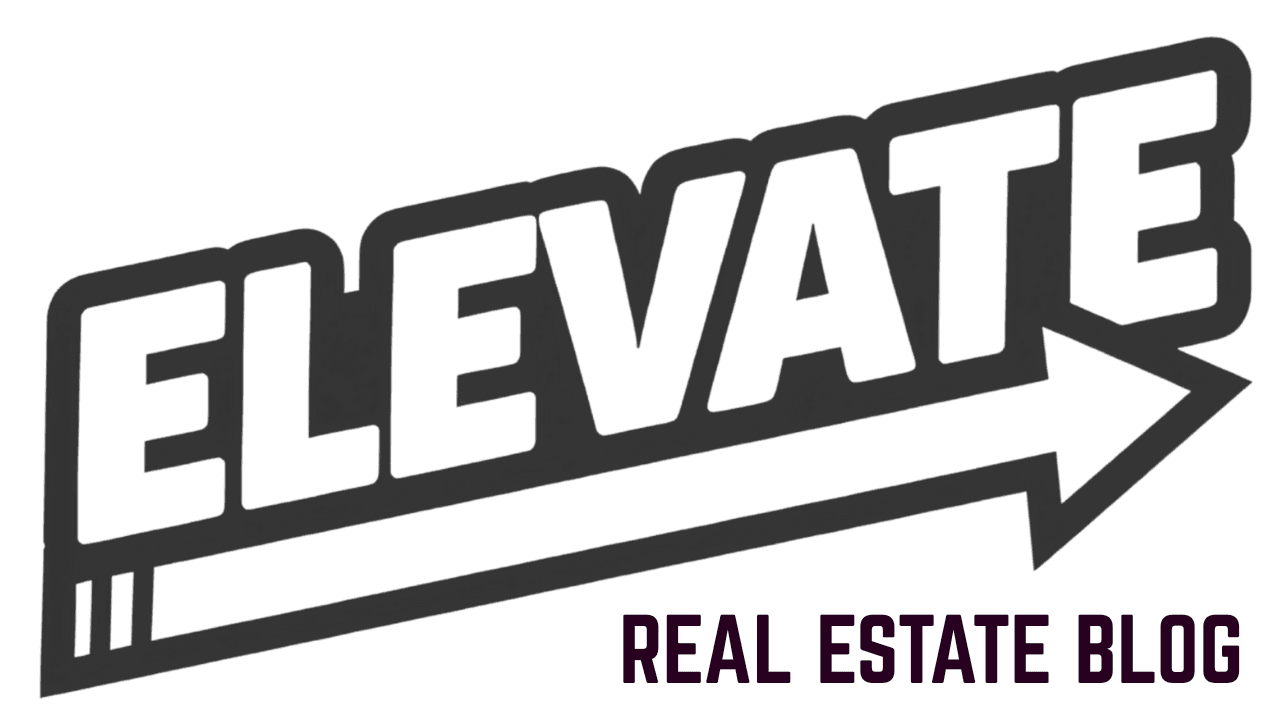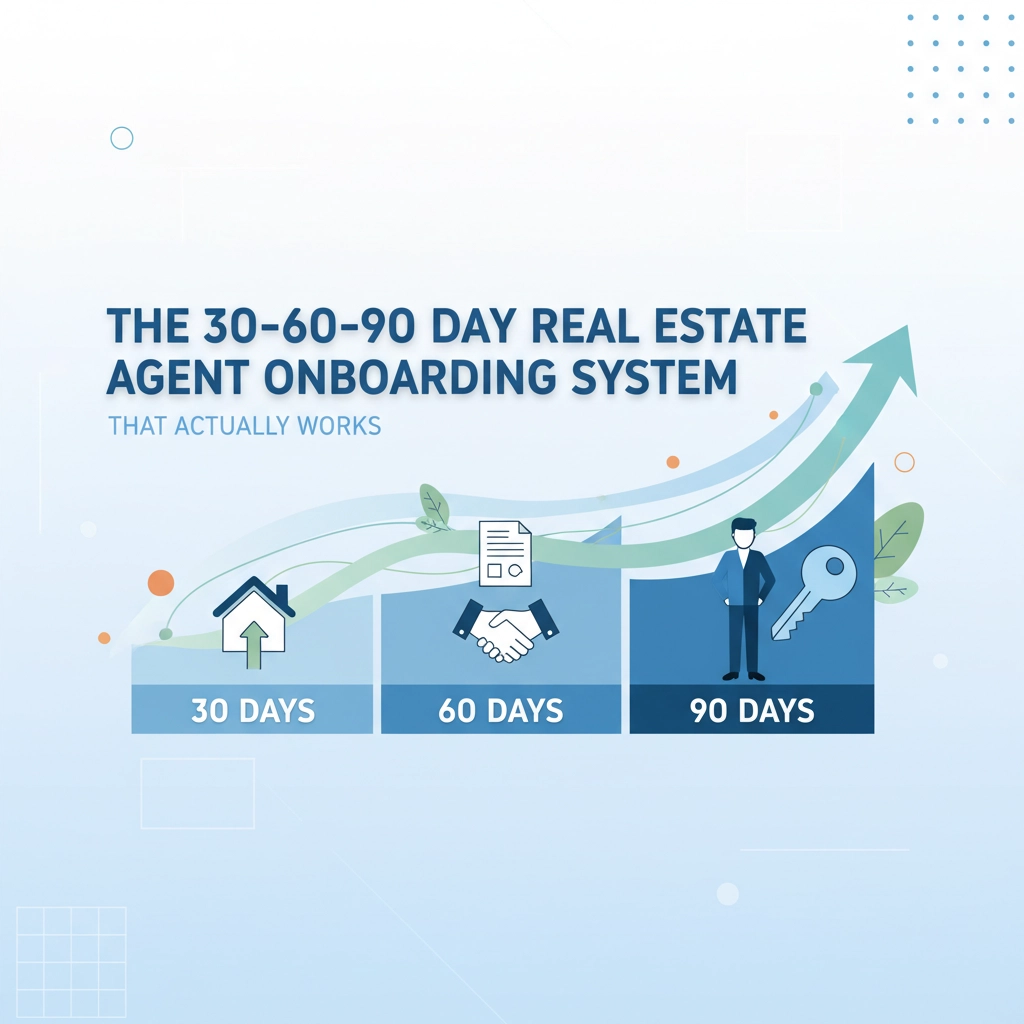Most real estate onboarding systems fail. 25% of new agents quit within 45 days. The problem isn’t lack of information: it’s lack of structure.
Traditional 30-60-90 day plans become ignored to-do lists. Agents have good intentions but no accountability. They rely on motivation instead of systems. This approach doesn’t work.
The solution is simple: replace checklists with calendar blocks. Replace intentions with scheduled commitments. Replace hope with data.
Why Traditional Onboarding Fails
Standard onboarding gives new agents a list of activities. Complete training modules. Build your database. Start prospecting. Set up your systems.
Agents receive the list. They put it in a folder. They never look at it again.
Without specific “by when” times blocked in calendars, activities don’t happen. Good intentions aren’t enough. Agents need structure, not suggestions.
The brokerages that retain agents treat onboarding as an intensive, scheduled process with clear milestones and regular check-ins.

Days 1-30: Foundation Phase
The first 30 days establish administrative infrastructure. This phase requires weekly one-on-one meetings and intensive support.
Week One: Setup
Complete all documentation requirements:
- Valid real estate licenses and certifications
- Proof of E&O insurance
- Background check results
- Signed company agreements
- Tax forms
Set up immediate system access:
- CRM platform
- MLS system
- Transaction management software
- Company email
- Marketing tools
Provide tech quick start guides. Conduct office tours. Make team introductions. These aren’t suggestions: they’re scheduled calendar blocks with specific completion times.
Weeks 2-4: Core Systems
Build the sphere of influence database. This is the most critical activity for long-term success. Agents who fail to build proper contact management systems during onboarding are significantly more likely to leave the industry.
Begin daily prospecting routines. Shadow experienced team members on listing presentations and buyer consultations. Complete essential training:
- Company policies and procedures
- Regulatory compliance
- Lead generation techniques
- Workflow expectations
- Ethical standards
Each training session gets a specific time slot. No exceptions.
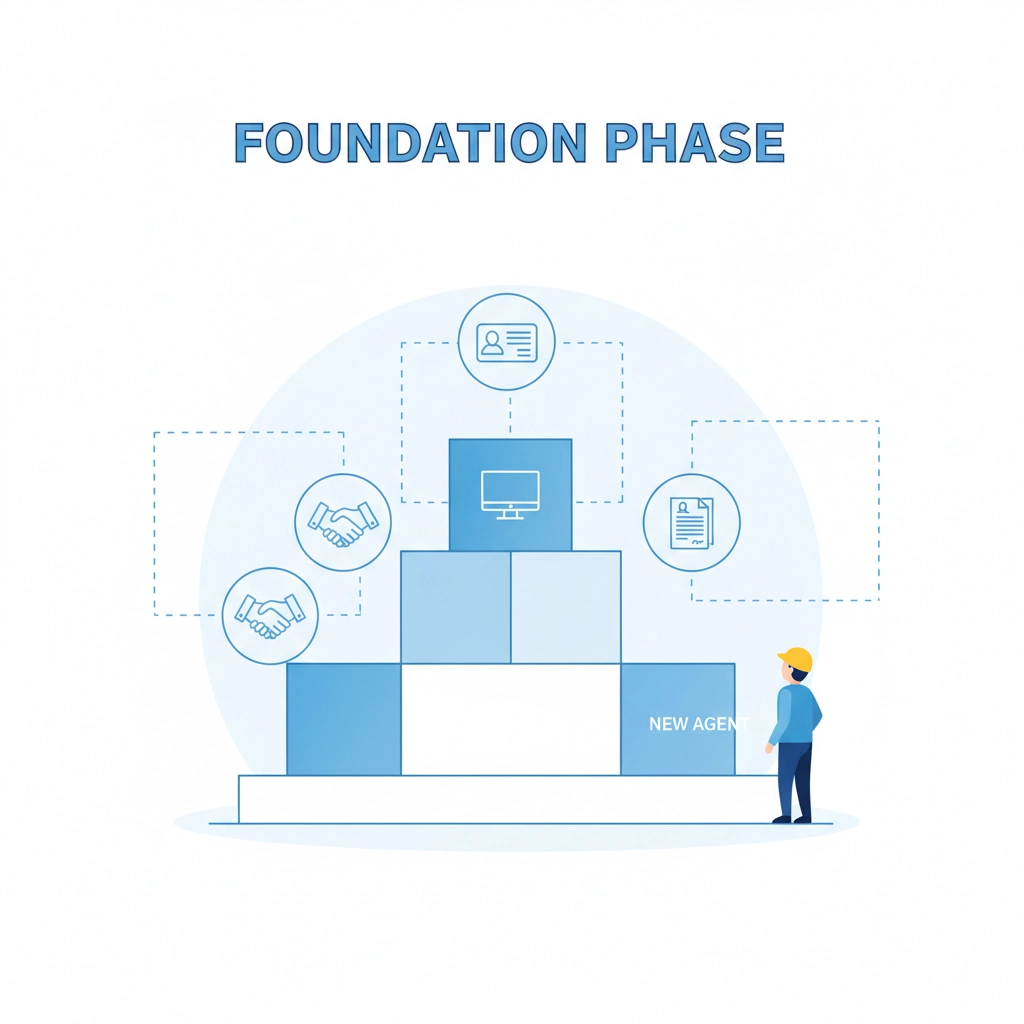
Days 31-60: Production Phase
Month two shifts toward production activities. Check-ins move to bi-weekly. Agents start generating business while building skills.
Setting Production Goals
Set specific, measurable objectives:
- Number of contacts added to database
- Completion of training modules
- First listing appointment scheduled
- Lead generation targets met
Track these metrics weekly. Use data, not feelings, to measure progress.
Building Systems
Implement lead generation systems with daily time blocks. Develop personal marketing materials. Establish transaction management processes.
This phase emphasizes active role playing and dialogue guidance. Customize training to individual needs based on early performance data.
Key Milestones
By day 60, agents should have:
- Complete contact database with 200+ entries
- Active lead generation system
- First client consultation completed
- Transaction pipeline established
These aren’t hopes: they’re requirements with specific deadlines.
Days 61-90: Integration Phase
The final month focuses on independent operation. Monthly performance reviews replace weekly meetings. Agents operate with minimal supervision while hitting production targets.
Performance Metrics
Track concrete objectives:
- Lead generation volume
- Client acquisition numbers
- Transaction progress
- Income projections
Break overwhelming annual goals into manageable 90-day targets. This creates focus and motivation while providing measurable benchmarks.
Ongoing Refinement
Adjust training based on performance data. Implement structured review processes. View onboarding as an ongoing system, not a one-time event.
Successful agents receive support through the full 90-day integration period. Rushed onboarding creates rushed departures.
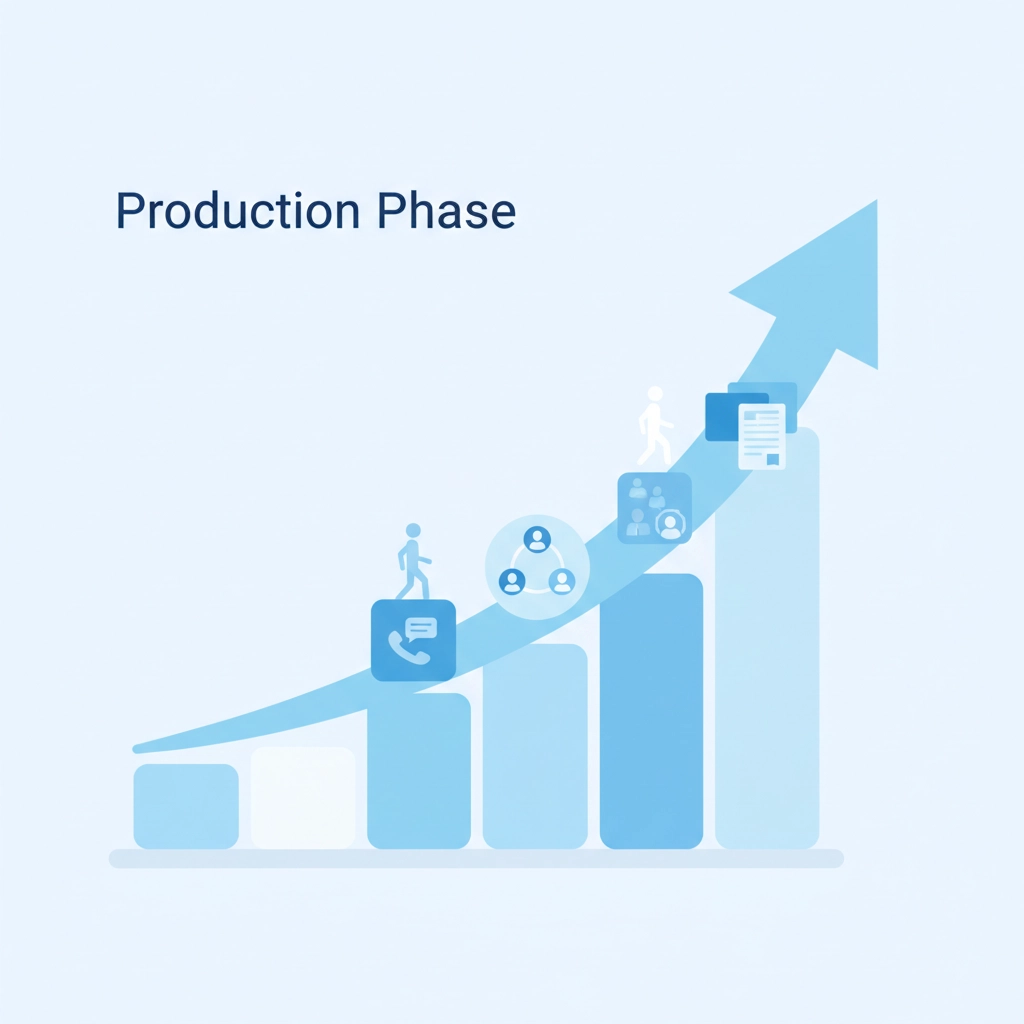
The Time-Blocking Difference
The fundamental difference between systems that work and those that fail: calendar-based accountability instead of list-based intentions.
Traditional checklists fail because agents rely on their own brains to prioritize correctly. This leads to excuses and missed activities. Without time blocking, important activities get pushed aside for urgent distractions.
Everything needs a specific “by when” time blocked in calendars. Not just a day: an exact time slot for each activity. This approach shifts from “to-do lists” to “must-do lists” where activities go directly into scheduled calendar blocks.
Implementation Steps
- Create detailed activity schedules for each 30-day phase
- Block specific times in agent calendars
- Set up automatic reminders and check-ins
- Track completion rates, not just activity lists
- Adjust timing based on actual performance data
This system removes reliance on motivation and replaces it with structured accountability.
Technology Makes the Difference
Modern onboarding requires digital platforms that automate processes and track progress in real-time.
Effective systems provide:
- Customizable workflow automation
- Standardized task sequences
- Automated document processing
- Real-time progress tracking
- Integration with existing tools
Technology reduces administrative burden while creating more engaging experiences for new agents. Manual tracking creates gaps. Automated systems ensure consistency.
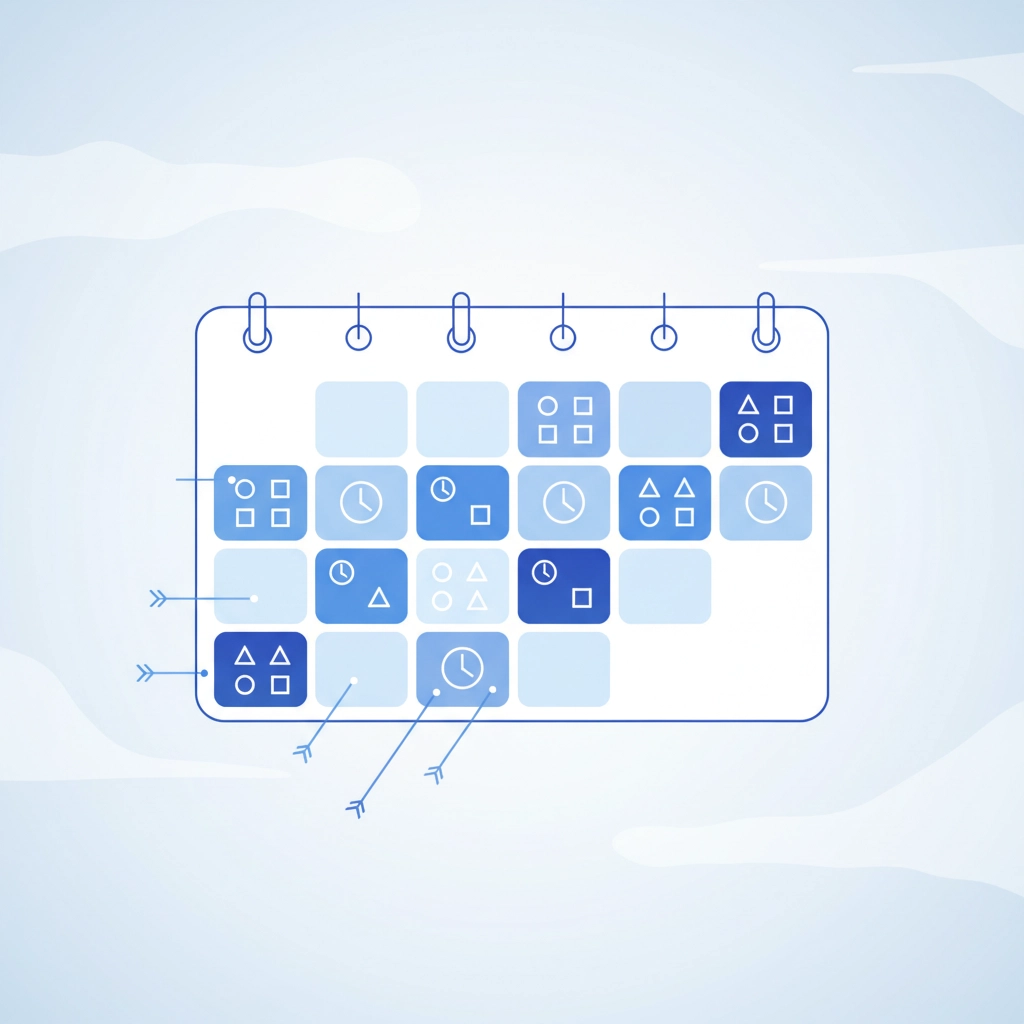
Support Schedule That Works
The cadence of support determines success rates:
Days 1-30: Weekly one-on-one meetings establish strong foundations and catch problems early.
Days 31-60: Bi-weekly check-ins maintain momentum while building independence.
Days 61-90: Monthly performance reviews ensure continued growth while allowing autonomous operation.
This graduated approach provides intensive early support while building agent confidence and capability.
Critical Success Factors
The system works when it removes distractions and focuses agents exclusively on necessary activities. Each program should be customized to individual needs within structured frameworks.
Successful onboarding requires:
- Time-blocked accountability instead of wishful thinking
- Technology automation for consistent execution
- Structured support schedules that gradually build independence
- Clear performance metrics based on data, not opinions
- Database management systems as the non-negotiable foundation
Agents who complete proper 90-day onboarding systems show significantly higher retention rates and faster productivity ramp-up compared to traditional approaches.
Implementation Reality
Most brokerages resist structured onboarding because it requires upfront time investment. They prefer to hire agents and hope for the best.
This approach costs more than structured systems. High turnover rates, lost productivity, and damaged team morale create expensive problems.
Investing in proper onboarding systems pays long-term dividends through higher retention, faster productivity, and stronger team culture.
The choice is simple: spend time on front-end systems or spend money on back-end problems.
Successful brokerages choose systems. They treat onboarding as a competitive advantage, not an administrative burden.
The 30-60-90 day framework works when it’s executed with calendar-based accountability, technology automation, and structured support. Everything else is just wishful thinking.
